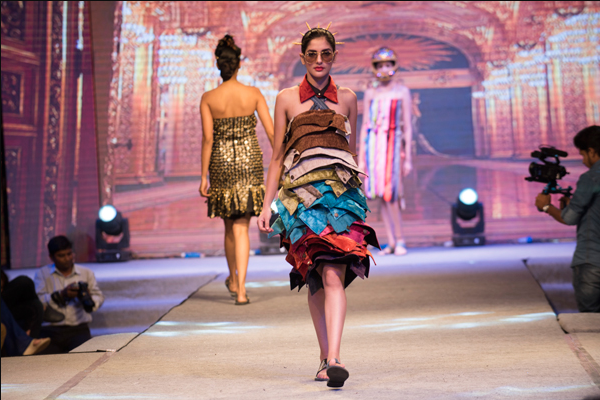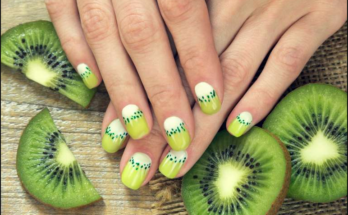Fashion is no longer an isolated industry; it’s increasingly intertwined with other sectors, creating a more dynamic and multi-faceted landscape. In 2024, we’re seeing fashion influence—and be influenced by—industries like wellness, entertainment, and politics, shaping the way we think about clothing and style.
1. Fashion and Wellness
The connection between fashion and wellness has grown stronger over the past few years, and in 2024, it’s more evident than ever. This trend is reflected in the rise of athleisure, the focus on comfort and functionality, and the integration of wellness into everyday wear.
Impact on the Fashion Industry:
- Athleisure Evolution: Athleisure, which blends athletic wear with leisurewear, has evolved from a casual trend to a staple in many wardrobes. Brands are now creating more sophisticated, versatile pieces that can be worn for both exercise and everyday activities.
- Mindful Materials: There’s a growing emphasis on materials that promote wellness, such as fabrics with moisture-wicking properties, UV protection, or even embedded skincare benefits. These innovations are designed to enhance comfort and support a healthy lifestyle.
- Holistic Design: Designers are increasingly considering the physical and mental well-being of the wearer. This includes creating clothing that is not only comfortable but also empowering, promoting body positivity and self-care through fashion.
How to Embrace Fashion and Wellness:
- Choose Functional Fabrics: Look for clothing made from fabrics that offer additional wellness benefits, such as bamboo, which is naturally antibacterial, or fabrics infused with aloe vera or other soothing elements.
- Prioritize Comfort: Don’t sacrifice comfort for style. Invest in pieces that allow you to move freely and feel good throughout the day. This could include high-quality leggings, supportive footwear, or breathable tops.
- Incorporate Wellness Accessories: Consider adding wellness-focused accessories to your wardrobe, such as compression socks, posture-correcting garments, or even jewelry designed to reduce stress.
2. Fashion and Entertainment
Fashion and entertainment have always been closely linked, but in 2024, this relationship is becoming even more pronounced. With the rise of digital platforms and the increasing influence of celebrity culture, fashion trends are being shaped by what we see on our screens—both big and small.
Impact on the Fashion Industry:
- Influence of Streaming Platforms: Streaming platforms like Netflix, HBO, and Disney+ are playing a significant role in setting fashion trends. Popular shows and movies often inspire viewers to adopt the styles they see on their favorite characters.
- Celebrity and Influencer Culture: Social media influencers and celebrities continue to have a massive impact on fashion, often launching or reviving trends through their personal style and collaborations with brands.
- Fashion in Music: Music videos and performances are another major influence on fashion trends. Artists often use their stage outfits to make bold statements, which then trickle down into mainstream fashion.
How to Embrace Fashion and Entertainment:
- Stay Inspired by Media: Pay attention to the styles featured in your favorite shows, movies, and music videos. Incorporate elements of these looks into your wardrobe, whether it’s a specific accessory, color scheme, or overall aesthetic.
- Follow Influencers: Follow fashion influencers and celebrities whose style resonates with you. This can give you ideas for how to adapt current trends to your personal style.
- Attend Fashion-Forward Events: If possible, attend fashion shows, concerts, or events where you can see cutting-edge fashion in action. These experiences can inspire your own wardrobe choices and keep you ahead of the trends.
3. Fashion and Politics
Fashion has always been a powerful form of political expression, and in 2024, this connection is more relevant than ever. As society becomes increasingly polarized, people are using fashion to make statements about their beliefs, values, and identity.
Impact on the Fashion Industry:
- Statement Clothing: Clothing with political slogans, symbols, or messages is becoming more popular as a way for people to express their views. From t-shirts supporting social movements to accessories that represent a cause, fashion is being used as a tool for activism.
- Ethical and Fair Trade Fashion: Consumers are increasingly demanding that brands align with their values. This has led to a rise in ethical fashion, where companies prioritize fair trade practices, sustainability, and social responsibility.
- Cultural Representation: There’s a growing demand for fashion that represents and respects diverse cultures. This includes clothing that celebrates indigenous designs, supports marginalized communities, or challenges cultural appropriation.
How to Embrace Fashion and Politics:
- Wear Your Beliefs: Use fashion to express your political views and support causes you care about. This could be through slogan tees, jewelry, or even the brands you choose to support.
- Support Ethical Brands: Make a conscious effort to support brands that align with your values. Look for companies that are transparent about their practices and contribute to social or environmental causes.
- Celebrate Diversity: Embrace fashion that represents diverse cultures and identities. This could include wearing pieces that celebrate your heritage or supporting designers from underrepresented communities.
Fashion Trends Across Different Demographics
Fashion in 2024 isn’t one-size-fits-all. Different demographics are embracing trends in unique ways, influenced by factors like age, location, and lifestyle. Here’s a closer look at how fashion trends are being interpreted across various groups.
1. Gen Z: The Digital Natives
Gen Z, known for their tech-savviness and social consciousness, are driving many of the current fashion trends. They prioritize individuality, inclusivity, and sustainability, and they’re not afraid to experiment with bold, unconventional styles.
Key Trends:
- Sustainable Fashion: Gen Z is leading the charge in demanding sustainable fashion. They prefer to buy from eco-conscious brands, shop secondhand, and embrace DIY fashion.
- Gender-Fluid Styles: This generation is at the forefront of the gender-fluid fashion movement, often mixing and matching pieces that defy traditional gender norms.
- Digital Fashion: Gen Z is also exploring digital fashion, purchasing virtual clothing and accessories for their avatars in online games and virtual worlds.
How to Dress Like Gen Z:
- Embrace Sustainability: Incorporate more sustainable practices into your fashion routine, such as thrifting, upcycling, or supporting ethical brands.
- Be Bold and Individualistic: Don’t be afraid to take risks with your style. Mix prints, play with color, and experiment with different silhouettes to create a look that’s uniquely yours.
- Explore Digital Fashion: If you’re interested in the digital world, consider investing in digital fashion or participating in virtual fashion events.
2. Millennials: The Practical Trendsetters
Millennials are balancing their love for fashion with practical concerns, such as budget, lifestyle, and sustainability. They value quality, versatility, and pieces that can transition from work to play.
Key Trends:
- Athleisure and Comfort: Millennials continue to champion the athleisure trend, prioritizing comfort and functionality in their clothing choices.
- Minimalism: Many millennials are embracing minimalist fashion, focusing on well-made, versatile pieces that can be styled in multiple ways.
- Tech-Infused Fashion: As technology becomes more integrated into everyday life, millennials are adopting tech-infused fashion items, such as smart watches, performance fabrics, and functional accessories.
How to Dress Like a Millennial:
- Invest in Versatile Pieces: Build a wardrobe around high-quality basics that can be mixed and matched for different occasions.
- Prioritize Comfort: Choose clothing that offers both style and comfort, such as tailored joggers, sleek sneakers, and soft, breathable fabrics.
- Incorporate Technology: Don’t shy away from tech-infused fashion. Whether it’s a smart jacket or UV-protective clothing, these pieces can add both functionality and style to your wardrobe.
3. Baby Boomers: The Classic Elegance
Baby Boomers tend to favor classic, timeless styles, but that doesn’t mean they’re not influenced by current trends. They often look for ways to incorporate modern elements into their wardrobe while maintaining a sense of sophistication.
Key Trends:
- Sustainable Luxury: Baby Boomers are increasingly interested in sustainability but often look for it in the context of luxury. They prefer high-quality, ethically made clothing that offers longevity and elegance.
- Comfortable Elegance: Comfort is key for this demographic, but they also value looking polished. This has led to a trend of combining classic pieces with modern, comfortable fabrics.
- Subtle Statement Pieces: While not typically drawn to bold trends, Baby Boomers appreciate subtle statement pieces, such as a well-cut blazer, a statement necklace, or a pair of stylish, comfortable shoes.
How to Dress Like a Baby Boomer:
- Invest in Quality: Focus on building a wardrobe of high-quality, timeless pieces that offer both style and longevity. Think tailored blazers, cashmere sweaters, and well-fitted trousers.
- Combine Comfort with Style: Look for clothing that combines comfort with elegance, such as knit dresses, soft blouses, and stylish yet supportive footwear.
- Incorporate Subtle Trends: Embrace current trends in a subtle way, such as adding a modern accessory or updating your color palette with on-trend shades.
The Global Impact of Fashion Trends
Fashion trends in 2024 are not confined to any one region; they’re being shaped by global influences. Designers are drawing inspiration from different cultures, and consumers are more connected than ever, leading to a truly global fashion landscape.
1. The Influence of Global Cultures
Fashion is increasingly drawing inspiration from global cultures, leading to a more diverse and inclusive industry. This includes everything from traditional textiles and patterns to modern interpretations of cultural clothing.
Impact on the Fashion Industry:
- Cultural Collaborations: Designers are collaborating with artisans and craftspeople from different cultures, creating collections that celebrate global diversity.
- Cross-Cultural Fusion: Fashion is becoming more eclectic as designers mix elements from different cultures, resulting in unique, hybrid styles that appeal to a global audience.
- Respect and Representation: There’s a growing emphasis on respecting and accurately representing the cultures being referenced in fashion, avoiding cultural appropriation and promoting cultural exchange.
How to Embrace Global Fashion:
- Explore Cultural Fashion: Incorporate elements from different cultures into your wardrobe, such as traditional prints, patterns, or accessories. Be mindful of the origins of these pieces and aim to wear them respectfully.
- Support Global Artisans: Look for brands that work directly with artisans from around the world, supporting traditional crafts and sustainable practices.
- Educate Yourself: Take the time to learn about the cultural significance of the fashion pieces you’re drawn to. This not only deepens your appreciation for the item but also helps you wear it with respect.
2. The Role of Technology in Global Fashion
Technology is breaking down barriers in the fashion industry, making it easier for trends to spread across borders. From online shopping to virtual fashion shows, technology is connecting consumers and designers from all corners of the globe.
Impact on the Fashion Industry:
- Global Access to Trends: Thanks to the internet, consumers can access global fashion trends instantly, leading to a more interconnected fashion landscape.
- Virtual Fashion Experiences: Technology is enabling virtual fashion shows, digital clothing collections, and online styling sessions, making fashion more accessible to people around the world.
- Personalization and Customization: With advancements in technology, consumers can now personalize and customize their fashion choices, from designing their own shoes to tailoring clothing to their exact measurements.
How to Embrace Global Fashion Technology:
- Shop Internationally: Take advantage of online shopping to explore fashion from around the world. Look for unique pieces from global designers or brands that may not be available in your local area.
- Participate in Virtual Fashion Events: Attend virtual fashion shows or digital styling sessions to stay connected with global fashion trends and experience the latest collections from anywhere in the world.
- Customize Your Fashion: Use technology to personalize your fashion choices, whether it’s through custom-made clothing, 3D-printed accessories, or online styling tools.
Final Thoughts on 2024 Fashion Trends
The fashion trends of 2024 are a reflection of the times—an era of rapid change, increased awareness, and greater connectivity. As you navigate these trends, remember that fashion is a personal journey, and the most important thing is to wear what makes you feel confident, comfortable, and true to yourself.
Whether you’re embracing bold colors, exploring sustainable fashion, or finding inspiration in global cultures, 2024 offers endless possibilities for self-expression through style. So, take these trends and make them your own, creating a wardrobe that reflects not just what’s in fashion, but who you are.



